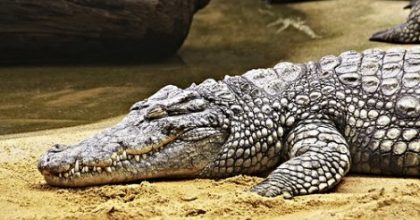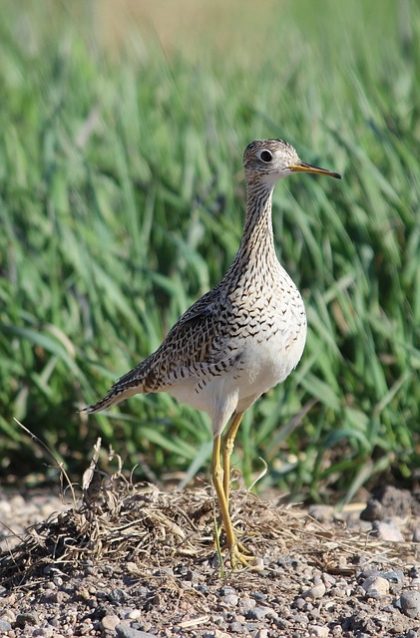
 )
)The Easter season is a natural time for Christians to reflect on miracles, as the resurrection of Jesus is the central miracle of our tradition. And as Robert Bruce Mullin reminds us in “Science, Miracles, and the Prayer-Gauge Debate,” miracles are a natural point of contact when science and Christianity meet. Thus scientists and theologians at that interface today continue to take up the question of whether one can reasonably believe that Jesus of Nazareth died and subsequently returned to life in a physical sense. BioLogos ran a whole series on the topic last month, Veritas Forum published this piece last Easter from scientist (and ESN contributor) Josh Swamidass, the Faraday Institute had N. T. (Tom) Wright speak on the topic a few years ago, to list just a few examples. Even Scientific American covered the topic last year, albeit with a different conclusion from Michael Shermer. (Let’s agree to be charitable and assume the fact it was published on April Fool’s Day last year rather than closer to Easter was a coincidence of the print publishing schedule.)
Just as in the 1870s, the era Mullin covers in his essay that is this week’s chapter from When Science and Christianity Meet, so today we can find scholars of all sorts covering the whole spectrum of answers on the resurrection. Some find scientific support for belief in all manner of miracles, while others doubt Jesus of Nazareth ever even lived a first time. And maybe that alone is enough to side with John Tyndall and other Victorian scientists who saw the scientific method as the only tool for making progress in learning. To revisit one of my favorite topics from science past, we no longer debate preformationism (organisms are preformed as tiny versions of themselves and only grow bigger) vs epigenesis (organisms develop from simpler materials), let alone ovism vs spermism (whether the tiny version originated in the egg or sperm, respectively). Observations raise questions, and experimental tests and further observations answer those questions so that our scientific knowledge accumulates. Meanwhile, theology debates persist unresolved. Schools of thought may wax and wane in popularity through the years, but nothing gets definitively answered.

 )
)If I may, however, I’m tempted to borrow from R. F. Littledale’s playbook and propose an answer inspired by biology, even evolutionary biology. You may have heard of crocodiles being described as living fossils because of their strong resemblance to crocodilians going back hundreds of millions of years to the time of dinosaurs. Some even go so far as to question whether evolution can be true if crocodiles haven’t changed in all that time. But evolution does not require gross morphological changes of the sort that would make even a layman say they are looking at a new and different creature. If a body plan and overall anatomy and physiology are viable, they can persist relatively unchanged. Likewise, the lack of change in theology may speak to its robustness rather than its irrelevance. Or perhaps it simply indicates that observations which can change our theology are few and far between, and so theology is obliged to change only rarely–such as in the face of a miraculous return from the grave. In that sense, scientists are fortunate (or perhaps unfortunate) to work in a field where new data arrives continuously.
“Ah, but crocodiles have changed far more than we might appreciate from casual comparison,” the more herpatologically savvy among you cry. In which case, isn’t my analogy invalid? Perhaps, but it could also be that theology has changed more than the casual observer might notice. The core of the Christian tradition remains the same (because anything that drifts too far from it eventually ceases to be distinctively Christian), yet it also has demonstrated a remarkable ability to adapt to different cultural contexts of time and space.
For example, Mullin observes shifting thoughts and attitudes about prayer over the course of the late 19th and early 20th centuries. Those shifts are partly in response to the conversation within and between scientific and religious communities on healing and the possibility of measuring the efficacy of God’s intervention. Even without systematic ‘prayer ward’-style studies (of which there is a long history into the present), we can draw some conclusions about prayer based on observation. God does not answer all prayers exactly in the way we expect. The probability of God answering a prayer as expected is not necessarily proportional to the number of people praying for that outcome. Neither is it proportional to our assessment of the prayer’s piety. Thus observational data can inform our theology of prayer, just as it informs our scientific theories.
At the same time, those same properties make prayer difficult to quantify in order to study it scientifically. We don’t have a clear model of how God values prayer, or if ‘value’ is even the right way to think about his response. God may not approach prayer quantitatively at all. And so our models that try to correlate the human quantifiables of prayers and outcomes may not get results because they don’t match reality. Not to mention that God is not bound by our study designs and can act on behalf of anyone regardless of whether we’ve observed prayers for them or not. Thus I personally wouldn’t expect a ‘prayer-gauge’ to work, at least not in a traditionally scientific sense, even if I think it is appropriate to believe God has an active relationship with his creation.
What do you think of contemporary or historical attempts to measure the effects of prayer? How do you interpret the results of those studies?
Andy has worn many hats in his life. He knows this is a dreadfully clichéd notion, but since it is also literally true he uses it anyway. Among his current metaphorical hats: husband of one wife, father of two teenagers, reader of science fiction and science fact, enthusiast of contemporary symphonic music, and chief science officer. Previous metaphorical hats include: comp bio postdoc, molecular biology grad student, InterVarsity chapter president (that one came with a literal hat), music store clerk, house painter, and mosquito trapper. Among his more unique literal hats: British bobby, captain’s hats (of varying levels of authenticity) of several specific vessels, a deerstalker from 221B Baker St, and a railroad engineer’s cap. His monthly Science in Review is drawn from his weekly Science Corner posts — Wednesdays, 8am (Eastern) on the Emerging Scholars Network Blog. His book Faith across the Multiverse is available from Hendrickson.

Leave a Reply